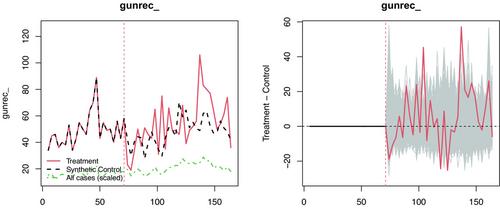We apply the microsynthetic control method to evaluate the gun violence prevention effect of gunshot detection technology (GDT) in Kansas City, MO. We measure the influence of GDT on process measures (ballistic evidence collection and gun recoveries) and outcome measures (shots fired calls for service, non-fatal shootings, fatal shootings, and aggravated assaults and robberies committed with a firearm). The GDT system was associated with higher levels of ballistic evidence collection in the GDT target area and surrounding catchment area, higher levels of gun recoveries in the surrounding catchment area, and lower levels of shots fired calls for service in the GDT target area. The GDT system did not influence any of the gun violence categories involving confirmed victims (non-fatal shootings, fatal shootings, and aggravated assaults and robberies committed with a firearm).
Agencies that highly prioritize increasing evidence collection and reducing unauthorized firearm discharges may consider dedicating necessary resources to acquire GDT. Agencies that prioritize the reduction of gun violence victimization, however, should consider whether resources are better used for solutions other than GDT. Moving forward, violence prevention scholars should strive to identify contextual factors that facilitate or mitigate the GDT system effect, in an attempt to better understand how to deploy GDT in a manner that maximizes the likelihood of success. This would provide additional guidance to public safety agencies looking to maximize return on investment. Continued adoption of GDT should perhaps be contingent upon the development of such research, given the high cost of the technology.



